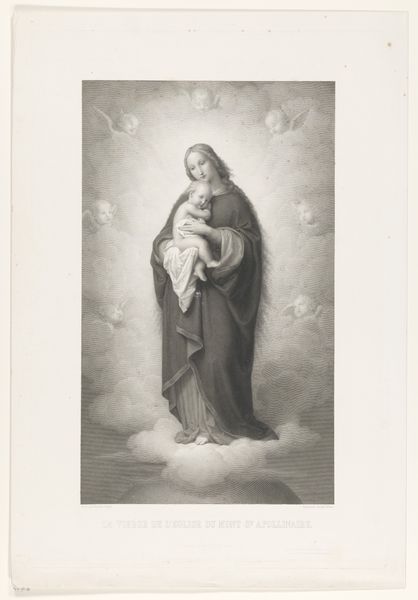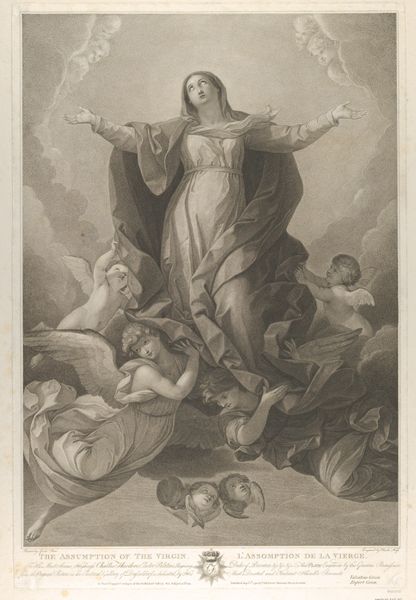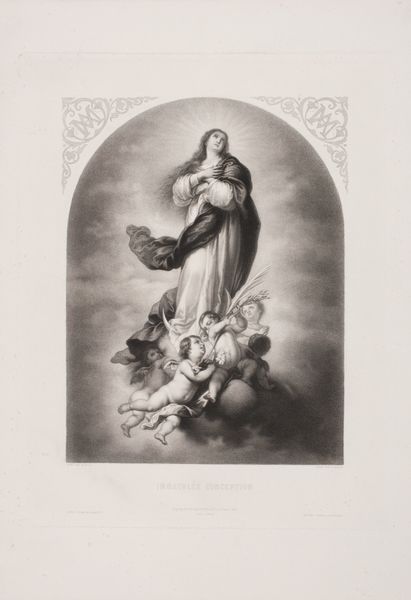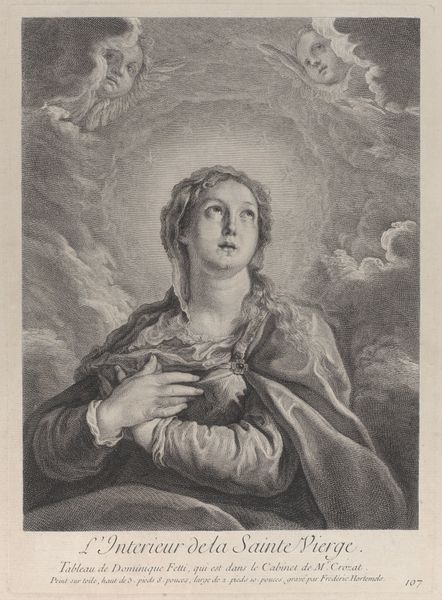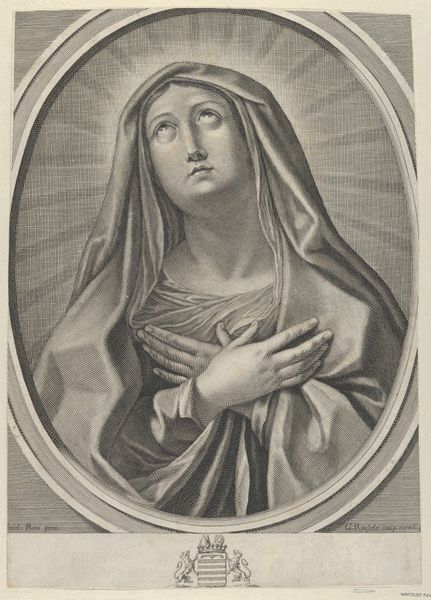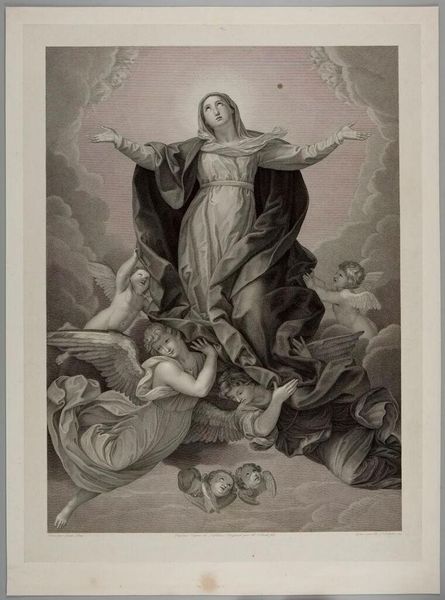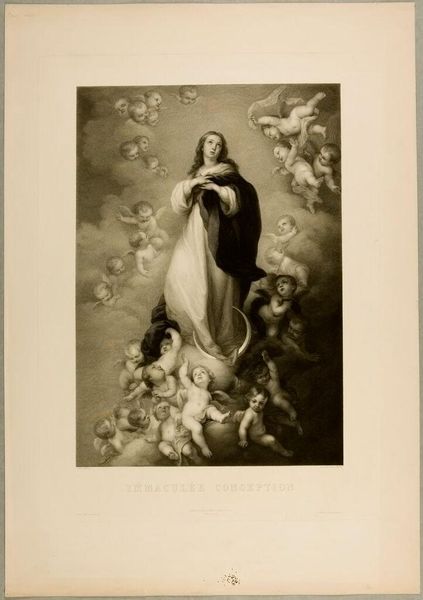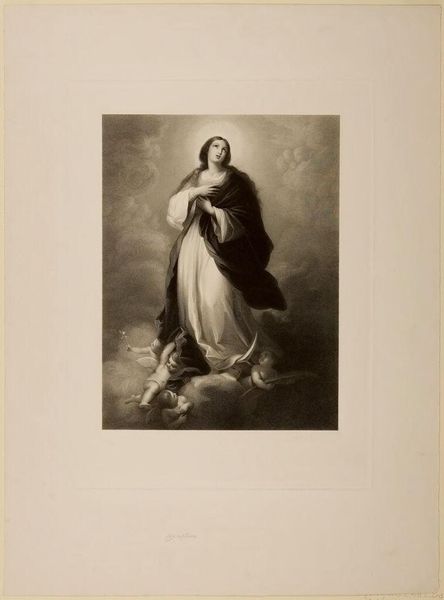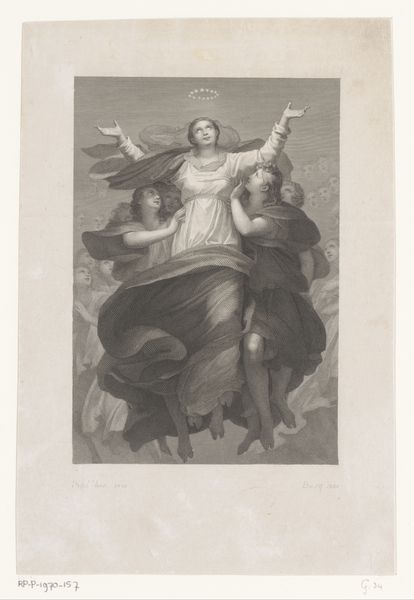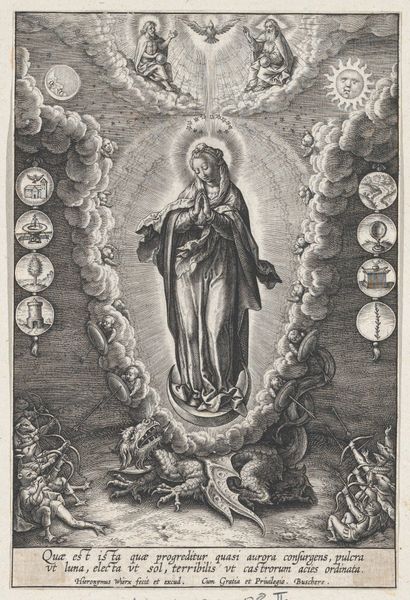
print, engraving
#
portrait
#
allegory
#
baroque
# print
#
charcoal drawing
#
history-painting
#
engraving
Dimensions: height 505 mm, width 353 mm
Copyright: Rijks Museum: Open Domain
Curator: Let's discuss "Maria van de Onbevlekte Ontvangenis," an engraving by James McArdell, likely created between 1745 and 1765. It resides here at the Rijksmuseum. Editor: It's a strikingly ethereal piece. The swirling clouds, the upward gaze of the Virgin, surrounded by those chubby cherubs – a very evocative atmosphere. It immediately speaks to ideas of transcendence and spiritual yearning. Curator: Absolutely. We have the central figure, Mary, seemingly floating amidst celestial beings. It's important to understand that this image reflects the evolving doctrines around the Immaculate Conception. This work provides a glimpse into the social and religious expectations placed upon women, particularly concerning purity and virtue. The cherubs act not just as decorative elements, but reinforce a specific iconography tied to the feminine ideal. Editor: I’m drawn to the textures achieved solely through engraving. Consider the drapery - the labor invested in depicting those folds must have been substantial. The contrast between the smoothness of her skin and the almost rough texture of the clouds underscores the material effort involved in representing the divine. It hints at the consumption of religious imagery in that period, the value placed on detailed depictions that conveyed the desired messages. Curator: Precisely. The use of engraving allowed for widespread dissemination, shaping perceptions of the Virgin Mary, and solidifying particular understandings of faith. Consider also the whiteness presented here – does it present any barriers? Editor: In my eyes, it makes you think of what kind of paper and ink were available during the period in Europe. The scale too – how big could the plates get? Curator: By understanding the intersections of power, faith, and artistic production evident in an object like this print, we can further access meaningful narratives around women and religion in the eighteenth century. Editor: Indeed. Reflecting on this piece, it's a powerful reminder of how artistic materials and processes served religious narratives, ultimately contributing to societal beliefs and values of the time.
Comments
No comments
Be the first to comment and join the conversation on the ultimate creative platform.
